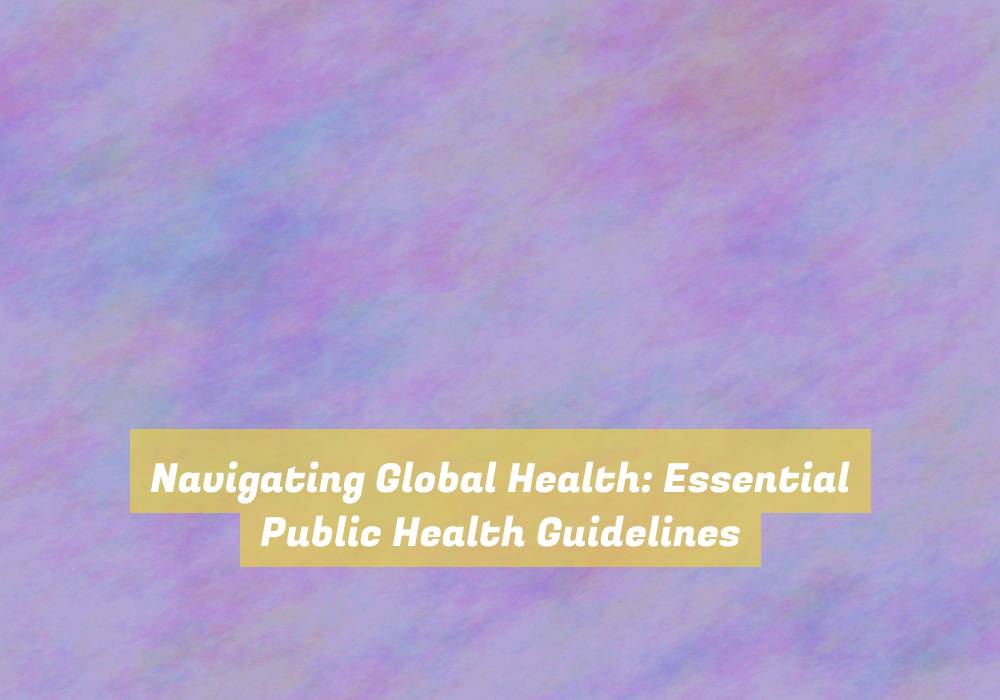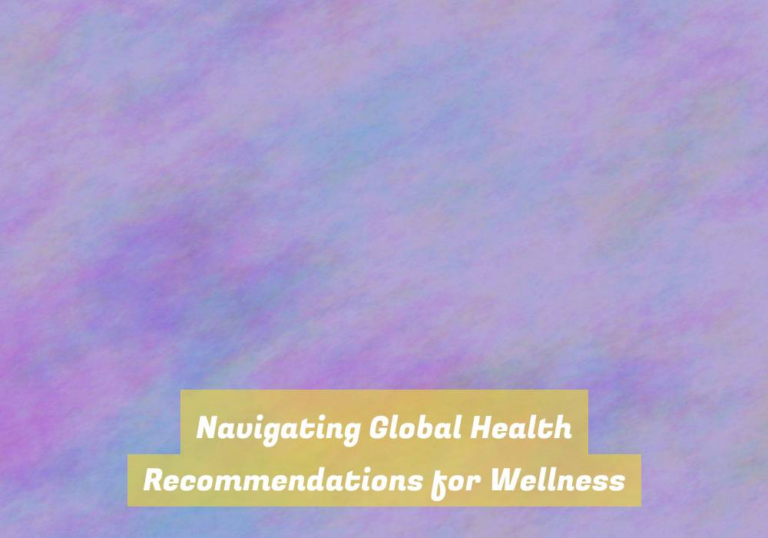Navigating Global Health: Essential Public Health Guidelines
So, you think navigating global health is as simple as following a map with a big red X marking the spot? Well, think again.
The world of public health is a complex web of interconnected issues, from infectious diseases to healthcare disparities, that requires a nuanced approach.
You may be surprised to learn that there are essential guidelines to help you navigate this intricate landscape and make a real impact on the well-being of communities worldwide.
But before you jump in, itG??s crucial to understand the multifaceted challenges and the strategies that can lead to meaningful change.
Understanding Global Health Challenges
Understanding global health challenges requires recognizing the interconnectedness of health issues across borders and the impact of social, economic, and environmental factors. As an individual, you play a significant role in addressing these challenges. By acknowledging the complex web of influences on global health, you can contribute to finding sustainable solutions.
When you understand the interconnected nature of global health challenges, you can appreciate the ripple effect of actions taken in one part of the world on health outcomes in another. For instance, an outbreak of a contagious disease in one country can swiftly spread to others, highlighting the need for coordinated global responses.
Moreover, recognizing the influence of social, economic, and environmental factors on health is crucial. Poverty, inequality, and environmental degradation can exacerbate health disparities, making it imperative to address these underlying determinants to achieve meaningful progress in global health.
Implementing Effective Disease Control
Recognizing the interconnected nature of global health challenges, you can play a pivotal role in implementing effective disease control measures to address the impact of contagious diseases on a global scale. As a public health advocate, your actions can significantly contribute to reducing the spread and impact of diseases worldwide.
One of the key steps in effective disease control is early detection and rapid response. By strengthening surveillance systems and promoting prompt reporting of suspected cases, you can help prevent the spread of infectious diseases across borders.
Additionally, advocating for vaccination programs and ensuring access to vaccines can be crucial in preventing outbreaks and protecting vulnerable populations. Collaborating with local communities and empowering them with the knowledge and resources to practice good hygiene and infection control measures is another essential aspect of disease control.
Moreover, investing in research and development of new treatments and diagnostics is vital to stay ahead of evolving pathogens. By actively engaging in these efforts, you can contribute to global health security and help mitigate the impact of contagious diseases on a global scale.
Promoting Healthcare Access and Equity
To promote healthcare access and equity, prioritize initiatives that address the underlying social determinants of health for all community members. This means focusing on factors such as income, education, employment, housing, and access to healthcare services. By addressing these determinants, you can help create a more equitable healthcare system where everyone has the opportunity to live a healthy life.
Encouraging policies that support affordable housing, educational opportunities, and employment stability can positively impact the overall health of a community. Additionally, ensuring that healthcare services are geographically and financially accessible to all individuals is crucial. This may involve establishing community health centers, offering transportation assistance, or implementing sliding-scale payment options.
ItG??s important to actively involve community members in decision-making processes to better understand their specific needs and barriers to healthcare access. By doing so, you can tailor interventions that directly address the unique challenges faced by different populations.
Ultimately, promoting healthcare access and equity requires a comprehensive approach that acknowledges and addresses the social determinants impacting individualsG?? health.
Fostering Community Well-being
Start by engaging community members in identifying their priorities for improving overall well-being. Actively listen to their concerns and ideas, as theyG??re the ones best suited to understand the unique challenges and strengths of their community. Encourage open dialogue and create a safe space for discussion to ensure that all voices are heard.
Once you have identified the communityG??s priorities, work collaboratively to develop targeted interventions that address the specific needs and concerns raised. This could involve creating programs that promote mental health, addressing social determinants of health, or providing access to resources that support healthy lifestyles.
ItG??s crucial to build partnerships with local organizations, leaders, and stakeholders to maximize the impact of these interventions. By working together, you can leverage existing resources and expertise to create sustainable solutions that foster community well-being.
Remember to regularly evaluate the effectiveness of your interventions and seek feedback from community members. Flexibility and adaptability are essential as community needs may evolve over time. By staying responsive to these changing needs, you can ensure that your efforts continue to positively impact community well-being.
Conclusion
As you navigate global health, remember to:
- Stay informed
- Take action
- Advocate for essential public health guidelines
By:
- Understanding global health challenges
- Implementing effective disease control
- Promoting healthcare access and equity
- Fostering community well-being
You can make a difference in the health and well-being of people around the world.
Together, we can work towards a healthier and more equitable future for all.





